Selvedge Style Vol. 1: Perfect Above-the-Belt Pairings for Raw Denim
Denim is the ultimate come-as-you-are fabric. It isn’t fussy about the company it keeps. It moves effortlessly through the wardrobe, forming friendships with just about everything from faded tees and threadbare flannels to top-shelf dress shirts and blazers. Plain and simple, it’s a casual fashion cornerstone.
When we step into the world of well-made denim, though, we begin to see our ratty flannels and band tees through new eyes. Just as our exposure to selvedge denim changes how we see five-pocket jeans, our exposure to denim and workwear artisans shows us that there is a whole world of well-made goods. Brands in this space bring the same degree of care and attention to above-the-belt pieces as they do to below-the-belt ones, and these pieces are the perfect complement to our well-made selvedge.
It’s not uncommon for those who dip a toe in the well-made pool to go on a spree, filling their closets with pieces from their favourite new makers. The result is almost inevitably a closet bursting with pieces that only get a fraction of the attention they deserve. It’s far better to buy and wear each piece slowly and deliberately.
These articles will help you do this. We’ll look at the core pieces in selvedge style. If you’re considering investing in a well-made wardrobe, these are the pieces to start with. Let’s start the ball rolling with a look at some of the most adaptable above-the-belt pieces.
More Denim
It is one of the denim scene’s most enduring questions: How much is too much of a good thing? Style experts look down their nose at the Canadian tuxedo, but only the most conservative style authorities say that one piece of denim is the limit. We all know that nothing goes better with a denim western shirt or a denim jacket than a pair of blue jeans, but we also know that double denim can quickly turn into a fashion disaster. Where’s the line?
There’s nothing to keep you from piling denim pieces on top of each other, provided that you introduce some contrast into the outfit. If you’re pairing a dark-coloured jacket and jeans, wear the jacket open and break up the ocean of dark blue with a light-coloured tee or henley. If, like McQueen and Eastwood, you’re pairing a denim shirt with jeans, make sure there’s a clear difference in the shades of the two pieces.
Remember that the dreaded Canadian tuxedo is a product of matching denim pieces. When doubling up on denim, don’t match. Instead, coordinate with contrasting shades. The contrast doesn’t have to be dramatic, but it should be obvious.
Flannels
Plaid has two spiritual homes. Though the woven pattern may have been born in Scotland, it reached its stylish apogee in the forests of the Pacific Northwest. The man who wore it best wasn’t a man at all. He was a mythic folk hero armed with an axe and a prodigious appetite: Paul Bunyan.
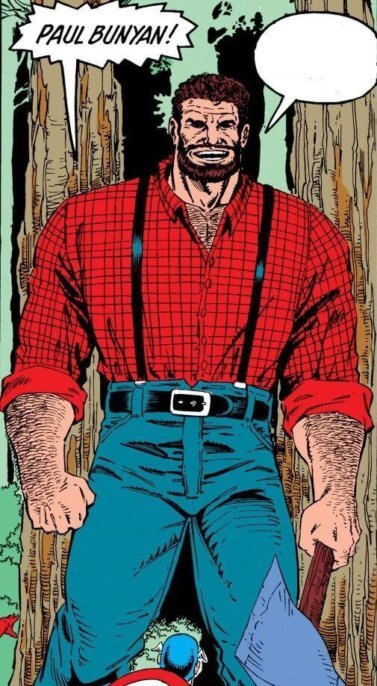
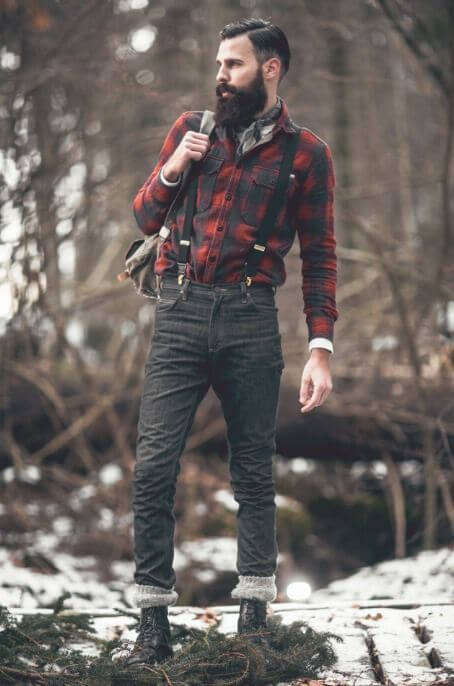
The most popular images of Bunyan have him in denim trousers, suspenders, and his signature red and black plaid. It’s a look deeply associated with the lumberjacks of the northern woods, and its popularity among bearded hipsters in the early 2000s led to a distinct fashion subcategory: the lumbersexual.
While the lumberjack style may not be as ubiquitous as it once was, today’s heritage makers remain fixated on the combination of denim and flannel—and for good reason. The softness of the brushed cotton is a perfect complement to the rigidity of selvedge denim, and the bold and earthy colour combinations give denim lovers a much-needed splash of colour (other than shades of blue).
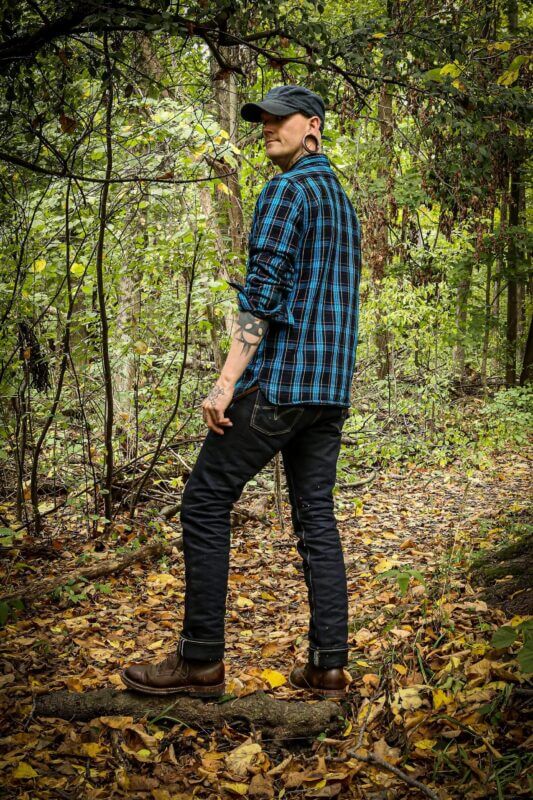
** Chris Clark in a Samurai Flannel **
Heritage Work Shirts
Unwittingly, photographers at the end of the nineteenth century and the beginning of the twentieth were documenting iconic moments in the history of workwear. They captured images of working men either swinging or casually leaning upon the tools of their trade—usually the pickaxe, the shovel, or the hammer. With their calloused insouciance, these men established a standard for working man’s style that is still emulated by many in the heritage scene.
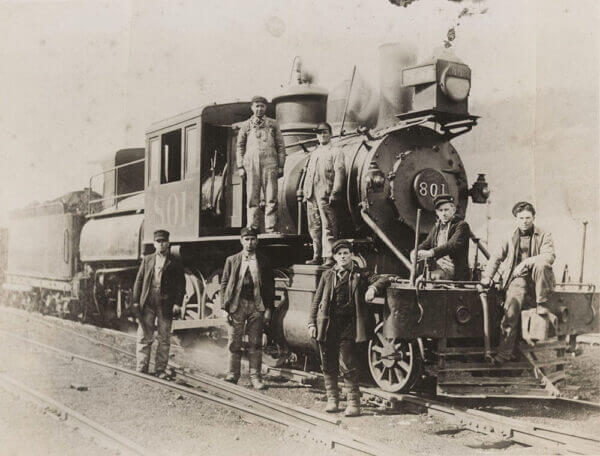
At the core of these looks is the heritage work shirt, which can be distinguished easily thanks to its open chest pockets usually fastened with a single button. Some makers also include extra heritage details like a slot for a pencil on the left chest pocket, a chin strap, and chain-stitch run off at the bottom of the major seams that run down the sides of the shirt.


** Examples of Heritage Work Shirts from Real McCoy’s 8HU and Warehouse **
The most common fabric for the heritage work shirt is chambray. Often confused with denim thanks to its coloured warp and undyed weft, chambray is a plain weave fabric, usually in either light blue or grey. Whether worn tucked in, usually with high-waisted denim, or untucked, it pulls our style deep into the past.

For an even deeper historical pull, reach for either wabash or hickory stripe. These fabrics were used to make the uniforms for competing railroad companies, and brands that want to lean deep into workwear’s old-west roots will often have options in one or both unmistakable patterns. As with chambray, for best results, pair wabash or hickory pieces with looser-fitting vintage-cut denim and engineer boots.
Cotton Basics: Tees, Long-Sleeves, and Henleys
Those who plunge headlong into the world of well-made selvedge denim often find themselves re-evaluating their entire wardrobes. Ratty tees and long-sleeves become subject to new scrutiny. While that band tee that’s been with us since that unforgettable summer festival will still be special to us, beautiful denim cries out for simple and unadorned basics in solid colours.

For great heritage brands, the simple white tee and other cotton basics are nothing less than an art form. Rather than using the shirt as a vehicle for branding or graphics, they keep their focus on the cotton fabric, going out of their way to create soft and supple fabrics that you’ll never want to take off.
For layered looks, these simple cotton pieces are the best starting point you can ask for. The feel of soft cotton against the skin transforms our experience of heavy and rugged fabrics like denim and canvas. The henley, with its buttoned placket often worn open, layers perfectly under heritage work shirts, westerns, or denim jackets, or it can be worn on its own.
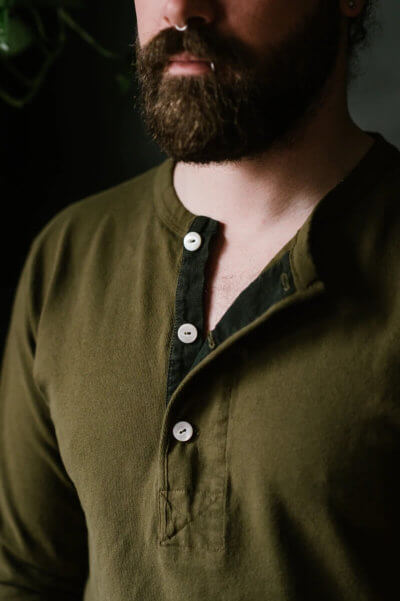

**&Sons demonstrating layered looks and Tommy Dant in an Olive Freenote Henley**
Spending a considerable amount on cotton basics might not seem crucial if you’ve already got drawers bursting with tees and long-sleeves. However, most people who experiment with well-made cotton basics never go back.
Our closing advice: If you’ve made the choice to invest in top-shelf denim below the belt, do the same thing for your above-the-belt shirting. Purchase slowly and deliberately and your investment will pay huge style dividends.
SOSO Family Newsletter
Be No.1 and receive the latest denim news, fabric releases and promotions!






